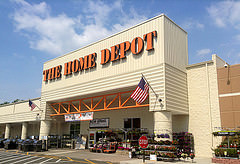Home Depot’s Online Community Isn’t Here to (Directly) Sell You Hammers

Credit: Mike Mozart (CC BY 2.0)
Jay Baer recently wrote about the importance of owning your “social community.” The idea of building community in spaces that you control is something I’ve always felt strongly about, and it’s good that someone like Jay is talking about it. That will help the message reach more big brands.
His article led to a discussion on Google+, where someone pointed to some examples provided by Jay – like The Home Depot Community – and questioned if they represented real “engagement.” They mentioned that there were discussions with a handful of replies and “no likes.” There were plenty of views of the discussions, but not a lot of replies. So where is the engagement, they wondered?
Who is Really Engaged?
Engagement is a funny word. If someone asks a question on a forum and there is only one answer to that question – one reply – but it is an amazing answer, does that mean only two people are engaged?
If that answer shows up at the top of various Google search results and tens of thousands of people read that answer and get the info they need, but they don’t reply, does that mean they aren’t engaged?
If the people who view the answer, and benefit from it, don’t increment some vanity metric somewhere – a like or a short reply saying “this was helpful!” – are they not engaged? Did they not get what they came for? Why are quick, fairly worthless vanity metrics more important than created value? i.e. the fact that you helped someone to the point where they didn’t need to bother posting at all?
The idea here is to create value for your customers and community, not to increment values in a spreadsheet. Not directly, anyway.
What’s the Job of Community?
If I’m Home Depot, and I’m working in community, my job isn’t to sell hammers. My job is to show people how to use hammers. Because I showed them how to use hammers, they look at the Home Depot brand in a better light, and when they need hammers, we now have a better chance of them coming to us (i.e. being top of mind). If we helped them, but Lowe’s didn’t, surely that is beneficial for us.
If I write something and no one “likes” it, does that mean it didn’t create value? Me telling them how to use hammers isn’t about self-gratification for me. It’s not about what I feel, how I worry about silence or a pat on the head that I need. It’s about self-gratification for my customer. It’s about being of service to them.
While you can build in metrics and ask people “was this helpful?,” most people don’t bother with that stuff. If you want, you can track more than just how many viewed content; you can track what they did afterward. But you also have to have a solid understanding that the point of commerce – whatever that may be – is something that you might not be able to track. Maybe they go to a Home Depot in person. Maybe they come back in a month. Maybe they buy the hammer on their laptop instead of their mobile phone where they viewed your community.
In other words, the goal of Home Depot – like most communities that are hosted by businesses – should be customer success. If their customers are successful, they are more likely to buy from Home Depot and buy more from Home Depot. You can minimally track this, you can augment that minimal data with surveys, but you have to possess a fundamental understanding that there is value in helping your customers to be more successful.
